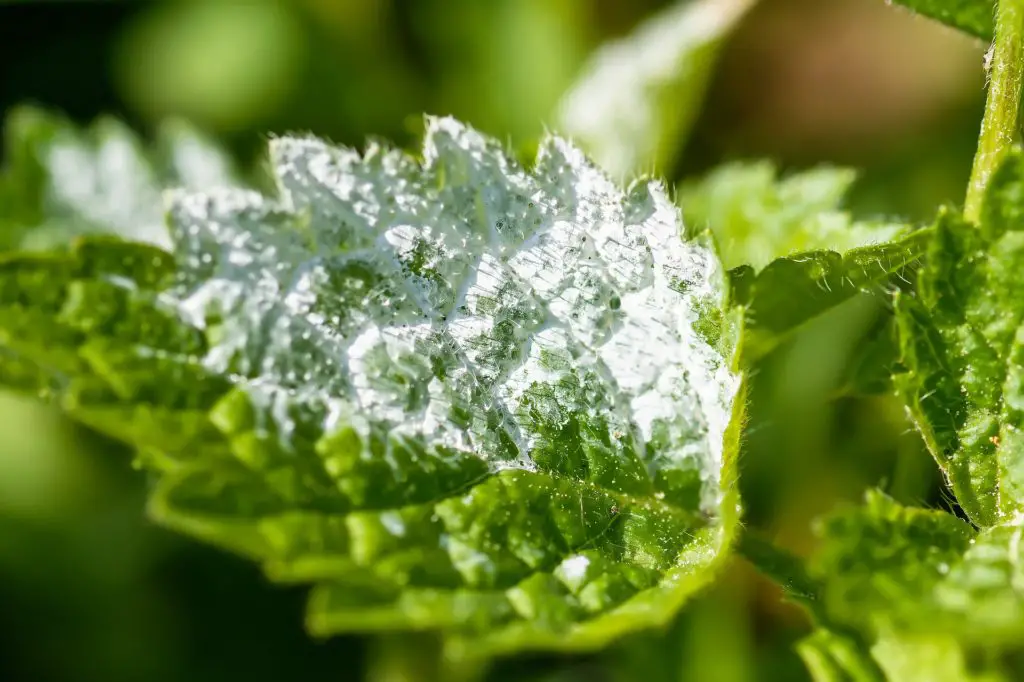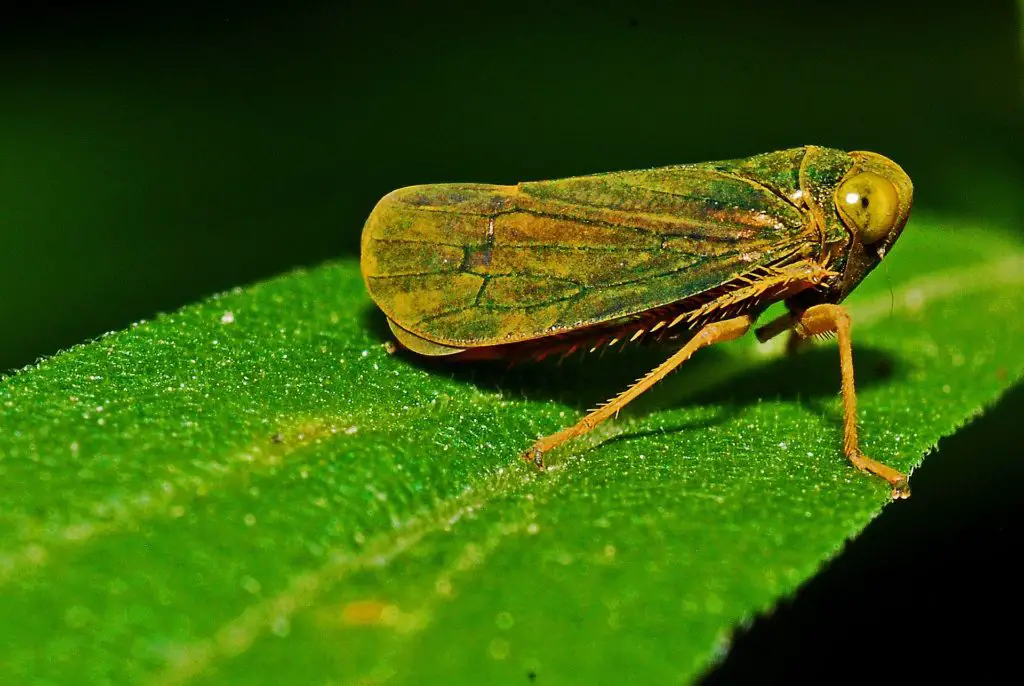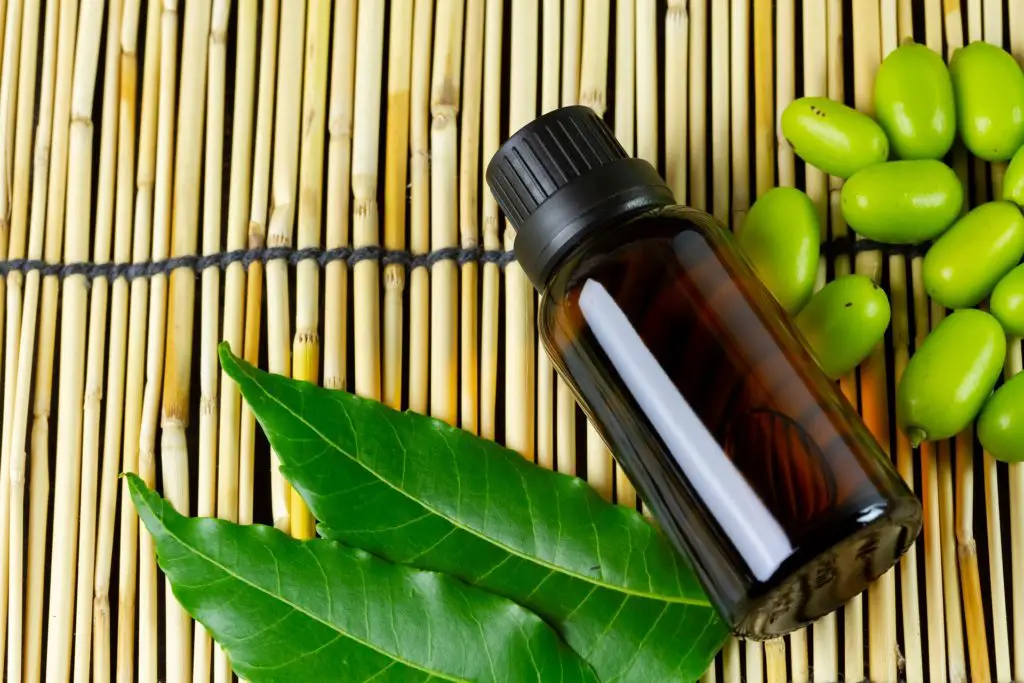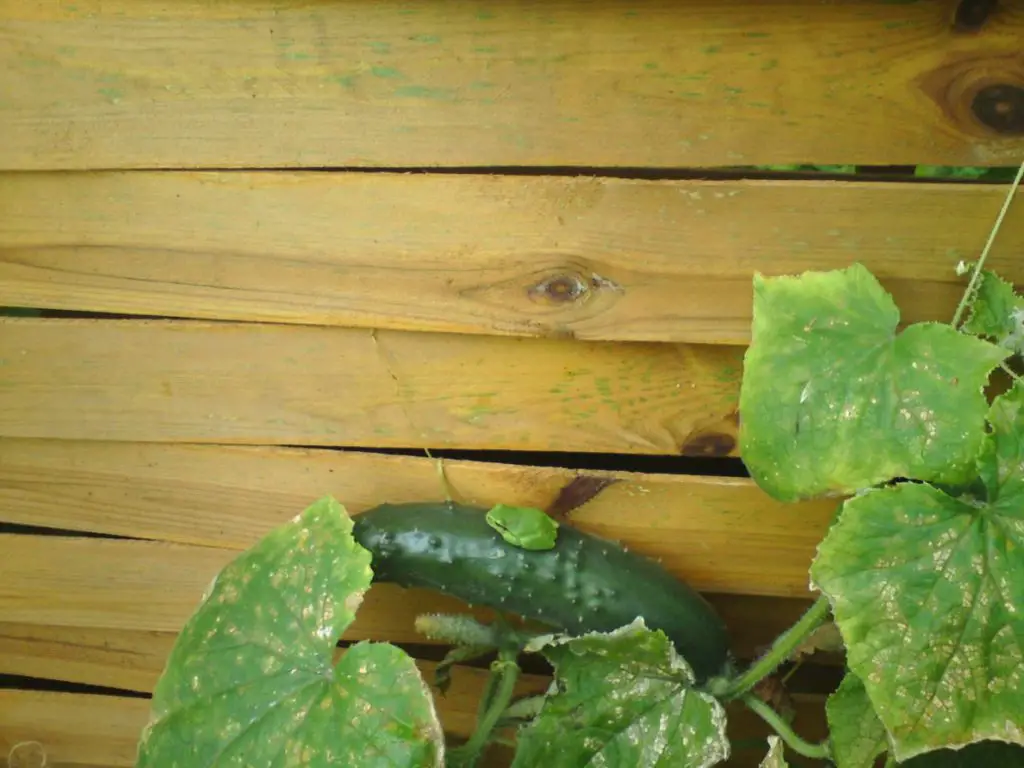You’ve just started growing your cucumbers, the seedlings are looking good, the stem is strong and they’re growing healthily. A few weeks later you’re out in your garden on a sunny afternoon and you take a look at your cucumber plants….Hold on – how come the leaves are turning white?
Cucumbers are a delicious addition to your garden but there are some things that can go wrong with them. This post will look at why cucumber leaves are turning white and what you can do about it.
Table of Contents
What Causes The Cucumber Leaves To Turn White?
Following are some of the reasons for cucumber leaves turning white.
Powdery Mildew

Powdery mildew is a common disease of cucumbers. It is a fungus that infects the leaves and stems of the cucumber plant, turning them a white/gray color. The leaves may also curl up and die. Powdery mildew thrives in warm, humid conditions and is often found in the greenhouse or on plants that are grown too close together. Powdery mildew is easily spread by spores that are spread by the wind. If your cucumber leaves are turning white keep Sphaerotheca fuliginea and Erysiphe cichoracearum in your mind as they are the real culprits causing powdery mildew!
Unintended Blanching
Now let’s talk about blanching. One of the reasons your cucumber leaves are turning white is not being able to absorb enough sunlight-blanching. Well, blanching of leaves is caused by a lack of chlorophyll. Chlorophyll is the green pigment found in leaves that allows the plant to produce sugars through photosynthesis. You may also end up having your cucumber leaves blanched due to overcrowding and lack of space in your garden.
Iron Chlorosis
Iron chlorosis is a common disorder that can affect cucumber plants. It’s caused by a lack of iron in the soil. Cucumber plants need high amounts of iron to develop properly. Let’s talk about the symptoms of iron chlorosis now. If there is a lack of iron, the leaves and fruit of your cucumber plant will turn white. The leaves will look pale and the veins will start to appear green.
They will have a similar appearance as if they are burned. Yellow spots will also appear on the leaves and they will turn limp. The fruit will also have a white patch on the skin that will turn into a yellowish color. The green veins will become visible on the inside of the fruit. If left untreated, the plant will eventually die.
Excessive Moisture
Cucumbers love water. But too much heat and too much water can cause problems. Cucumber leaves will turn white due to excess moisture in the soil. This is caused by watering too much and too deep. You shouldn’t water the soil but water the leaves.
Leafhoppers

White spots on cucumber leaves are caused by leafhoppers, which are small insects that suck the sap out of the leaves. They are often found on the underside of the leaves and look like white specks or spots. They may also cluster together on the leaf veins. If many of the cucumber leaves have white spots, it is likely that the cucumber plants are being attacked by leafhoppers.
Remedial Measures You Can Take To Fix the Issue
Baking Soda, Vinegar, Milk, Commercial Fungicide, and Neem Oil for Powdery Mildew
Baking Soda
Baking soda is an organic, all-natural mildew killer. It’s popular because of its low cost and environmental non-toxicity. Baking soda can be mixed with liquid soap to make a safe solution for killing mold on cucumber plants. The mix should be applied to the infected area with a spray bottle, allowing the solution time to slowly sink into plant tissue and kill the fungus causing blue mold.
Vinegar
Vinegar can fight mildew because it has acetic acid in it. You can use a solution of 1 tablespoon vinegar to every liter of water to control this disease. Vinegar is also a good tool for fighting other diseases and as an insect deterrent, as well. Be careful not to over-treat your homegrown cucumber plants by adding too much vinegar to the soil or foliar treatments because it can burn cucumber leaves and make the plant vulnerable to other problems like botrytis or powdery mildew.
Milk
Milk is believed to contain compounds that are responsible for killing fungus. It’s also believed to contain compounds that improve the immune system of plants. Scientists argue heated and pressed milk may be able to prevent the growth of the fungus responsible for powdery mildew disease in cucumber plants. Further experiments on heating, cooling, pressing, and grinding of raw milk were done during these years in order to ascertain the effectiveness of raw milk in fighting adverse fungi infestation when mixed into protective solutions.
Commercial Fungicide
Pesticides can be hard on the environment in general and should ideally be used only after all-natural remedies have been attempted first. Fungicides are a commonly used type of pesticide. While using them to combat cucumber powdery mildew is easy, eliminating such diseases is seldom a simple matter. The best approach is to prevent the problem from ever occurring by physically cleaning off infected plants regularly and avoiding any buildup on cucumber leaves or in the soil that might help the disease take root and take over.
Neem Oil

Neem oil is a pest and disease repellant that can benefit the health of your cucumber leaves. This essential oil can be obtained via steam distillation from the seeds inside the fruits of the neem tree which are most commonly found in East Africa and India. Neem oil may be useful as an additive to control powdery mildew which is known to cause garden problems between seasons. As you can see, there are plenty of ways you can prevent powdery mildew (a common fungus) from attacking your crops before they ever get sick.
Ensure Required Exposure to Sunlight for Blanching
The cucumber leaves are turning white because the plant is a vining plant, and it needs the sun in order to blanch the cucumber. The cucumber plant needs at least 8 hours of sunlight to blanch the cucumber. It is important to ensure your homegrown cucumber plant gets enough sunlight. If the plant is not getting enough sunlight, the cucumber will turn white. Luckily, there are some easy ways to prevent this. One way is to move the plant to an area where it has more sunlight. Another way is to make sure that there is nothing blocking sunlight from hitting the plant. For example, if there is a roof above the plant, try removing it.
Apply Ferric Chelates for Iron Chlorosis
You can treat iron chlorosis by adding iron chelates to your soil and foliar sprays with iron sulfate, both of which are readily available for purchase in stores selling gardening supplies.
Apply Insecticide for Leafhoppers
Try floating row covers to deter leafhoppers from damaging cucumber leaves. Make sure to thoroughly cover both the upper and lower surfaces of the leaves with insecticidal soap because it’s a quick and easy way to protect against threats such as leafhoppers. Remember that cleaning up your garden after each harvest is one of the most important things you can do during this time of year to minimize opportunities for insects like leafhoppers to overwinter and start destructive cycles all over again later on.
Conclusion
We hope you enjoyed our article on the reasons of cucumber leaves turn white. With this knowledge, we know that you can keep your Cucumbers fresh and green for longer. So what are you waiting for?

